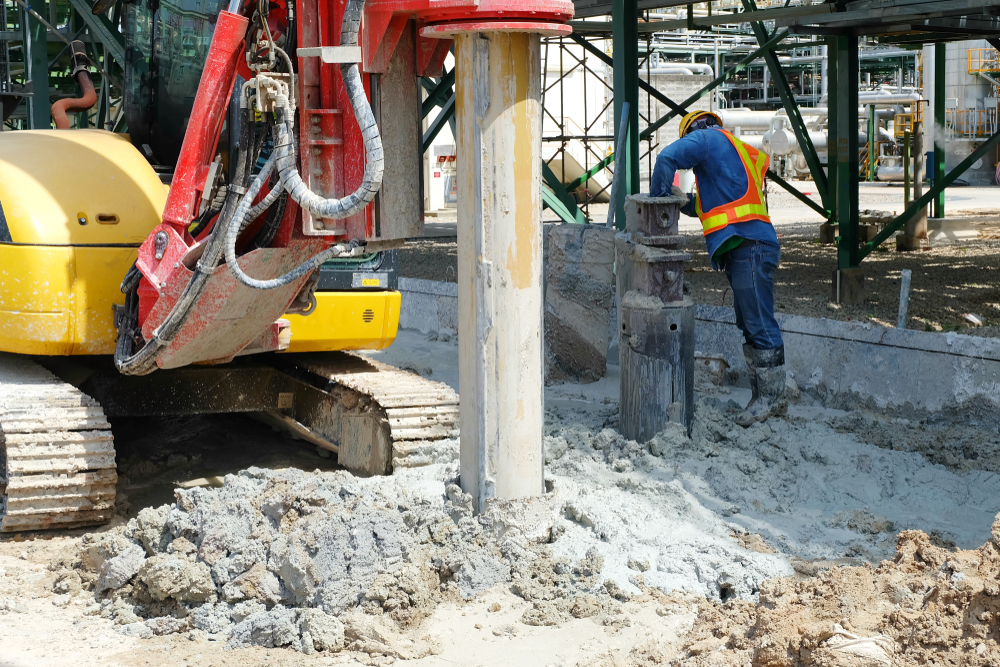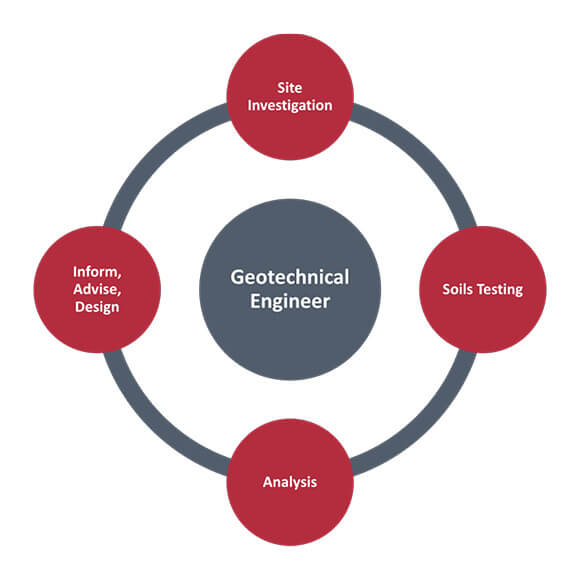The Buzz on Geotechnical Engineering For Construction Projects
The Definitive Guide to Geotechnical Engineering For Construction Projects
Table of ContentsGeotechnical Engineering For Construction Projects Things To Know Before You BuyLittle Known Facts About Geotechnical Engineering For Construction Projects.How Geotechnical Engineering For Construction Projects can Save You Time, Stress, and Money.Geotechnical Engineering For Construction Projects Things To Know Before You BuyOur Geotechnical Engineering For Construction Projects Statements5 Simple Techniques For Geotechnical Engineering For Construction ProjectsThe Definitive Guide to Geotechnical Engineering For Construction Projects
Principles and Practice of Ground Enhancement. Ground Enhancement Concepts And Applications In Asia. Layout evaluation in rock technicians.Cengage Understanding, Stamford, 666 p. Atkinson, J., 2007. The technicians of dirts and structures. The Observational Approach in ground design concepts and applications.
Everything about Geotechnical Engineering For Construction Projects
Laboratory and field testing plays a vital role in this procedure. By removing samples from the earth's subsurface and applying a suite of examinations, geotechnical engineers can forecast the behaviour of soil layers and evaluate their suitability for numerous building efforts. The essence of geotechnical design in civil design can not be overstated, attributable to numerous elements: The first action in any kind of geotechnical study includes determining the soil kind at the construction site.
Recognizing these attributes ensures that only appropriate dirt types are chosen for the advancement, therefore averting prospective architectural failings. The structure serves as the bedrock of any type of construction project. Choosing the ideal foundation type is a choice that depends upon the thorough analysis provided by geotechnical design. This makes certain the longevity and security of frameworks by fitting the tons they will birth.

Geotechnical website examination is an important action in the planning and execution of any type of building and construction task. It includes the collection and analysis of data connected to the physical properties of soil and rock under a recommended building and construction website. This details is essential for the style and building of risk-free, steady, and sustainable frameworks.
8 Easy Facts About Geotechnical Engineering For Construction Projects Described
In this blog, we will certainly dig into the relevance of geotechnical site examination, its different components, and just how it benefits building and construction jobs. Geotechnical website investigation, also known as subsurface exploration, involves a series of tasks aimed at figuring out the soil, rock, and groundwater problems at a building and construction site. The main objectives are to determine potential geotechnical dangers, assess the design residential properties of subsurface materials, and supply recommendations for the style and construction of foundations, preserving walls, and various other frameworks.
This might include geological maps, airborne pictures, previous examination reports, and historical data. The desk study assists in determining prospective geotechnical problems and preparing the succeeding fieldwork. Following the desk study, a website reconnaissance is performed to aesthetically evaluate the website and its environments. This entails observing the topography, water drainage patterns, existing frameworks, plant life, and any kind of indicators of instability or disintegration.
Not known Facts About Geotechnical Engineering For Construction Projects
Superficial test pits are dug deep into to directly observe and example the soil and rock. This approach is valuable for researching the upper layers of the subsurface and identifying near-surface threats. Non-invasive geophysical techniques, such as seismic refraction, ground-penetrating radar (GPR), and electrical resistivity tomography (ERT), are made use of to map subsurface conditions and spot abnormalities.
Dirt and rock examples gathered during the area investigation are subjected to laboratory testing to determine their physical and mechanical residential properties. Typical research laboratory tests consist of grain dimension evaluation, Atterberg restrictions, compaction examinations, triaxial shear examinations, and loan consolidation examinations. These examinations offer crucial data for geotechnical evaluation and layout. The data accumulated from the workdesk study, website reconnaissance, area investigation, and research laboratory screening are analyzed and interpreted to develop an extensive understanding of the subsurface conditions.
The main benefit of geotechnical site examination is ensuring the safety and stability of structures. By comprehending the subsurface problems, designers can make foundations and various other structural components that can stand up to the lots and environmental pressures they will certainly be subjected to. This reduces the danger of negotiation, decrease, and architectural failing.
What Does Geotechnical Engineering For Construction Projects Do?
This makes certain reliable and risk-free building techniques. Geotechnical site investigations are typically called for by constructing codes and laws.
This information is important for task managers, engineers, and service providers in creating sensible schedules, spending plans, and backup plans. Geotechnical Engineering for Construction Projects. Skyscraper in a Coastal AreaIn a coastal city, a high-rise residential structure was intended on a website with believed loosened sand deposits and a high water table. A thorough geotechnical examination, including borehole exploration, CPT, and geophysical surveys, was performed
Some Of Geotechnical Engineering For Construction Projects
Based on these findings, the foundation layout was changed to consist of deep stack structures expanding right into steady strata, and ground enhancement techniques, such as vibro-compaction, were implemented to mitigate liquefaction threats. This positive method guaranteed the safety and stability of the building while avoiding costly post-construction remediation. Framework Growth on a Sloping TerrainA major facilities task, involving the building and construction of a highway and bridges, was intended on an uneven surface with high slopes.

The Leaning Tower of Pisa (Italy), a renowned building marvel, is well known for its unintended tilt from considerable geotechnical issues. The tower's structure was inadequately designed to take find more care of the soft, unsteady soil under it, causing uneven negotiation and its distinctive lean. Our world is dotted with excellent infrastructure projectsfrom looming skyscrapers to sprawling bridgesall standing testament to the evolution of the numerous building equipment and methods offered.
Geotechnical engineering is a specific field within civil engineering that concentrates on researching the habits of planet materials. This branch digs deep right into the groundinvestigating how the soil, rock, and groundwater at a construction site can influenceand be affected bythe facilities that we put up on and into them. More about the author Before a solitary brick is laid or a concrete foundation poured, geotechnical engineers probe right into the earthgathering vital information about the website's soil structure, rock framework, and groundwater degrees.
Get This Report about Geotechnical Engineering For Construction Projects

is a device used to analyze the integrity and load-bearing capability of piles during installment, leveraging the principle of wave proliferation. It optimizes building and construction effectiveness by supplying real-time evaluations, hence guaranteeing risk-free and efficient stack structures. One of the functional applications of geotechnical design entails determining and performing the ideal approaches for structure building and construction.
Load driving stands for more than the plain act of inserting architectural elements right into the ground. However, it is a carefully orchestrated procedure of transferring a framework's lots past the much less secure dirt layers closer to the surfacedown to the much more significant strata that exist below. When it comes to heap website here driving, consider exactly how geotechnical designers skillfully use this strategy to equally distribute the structure's weight.